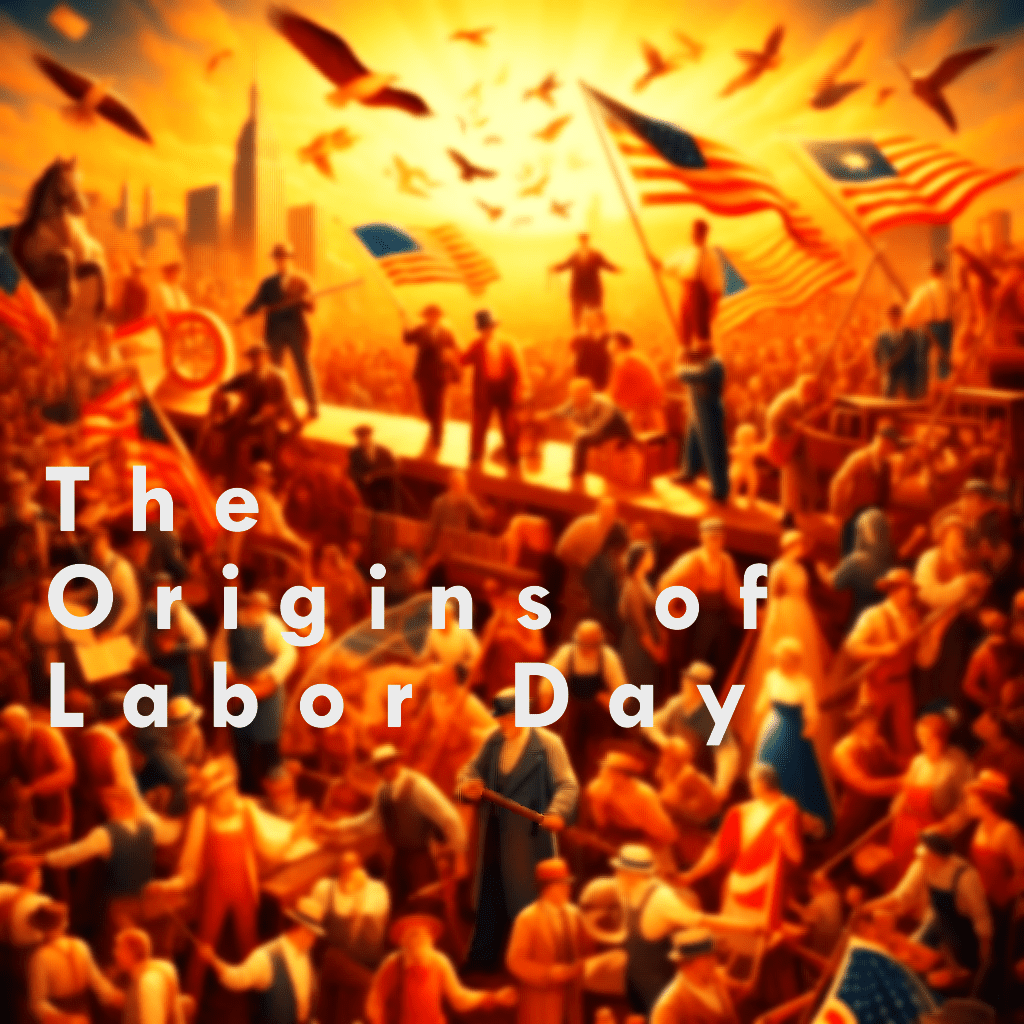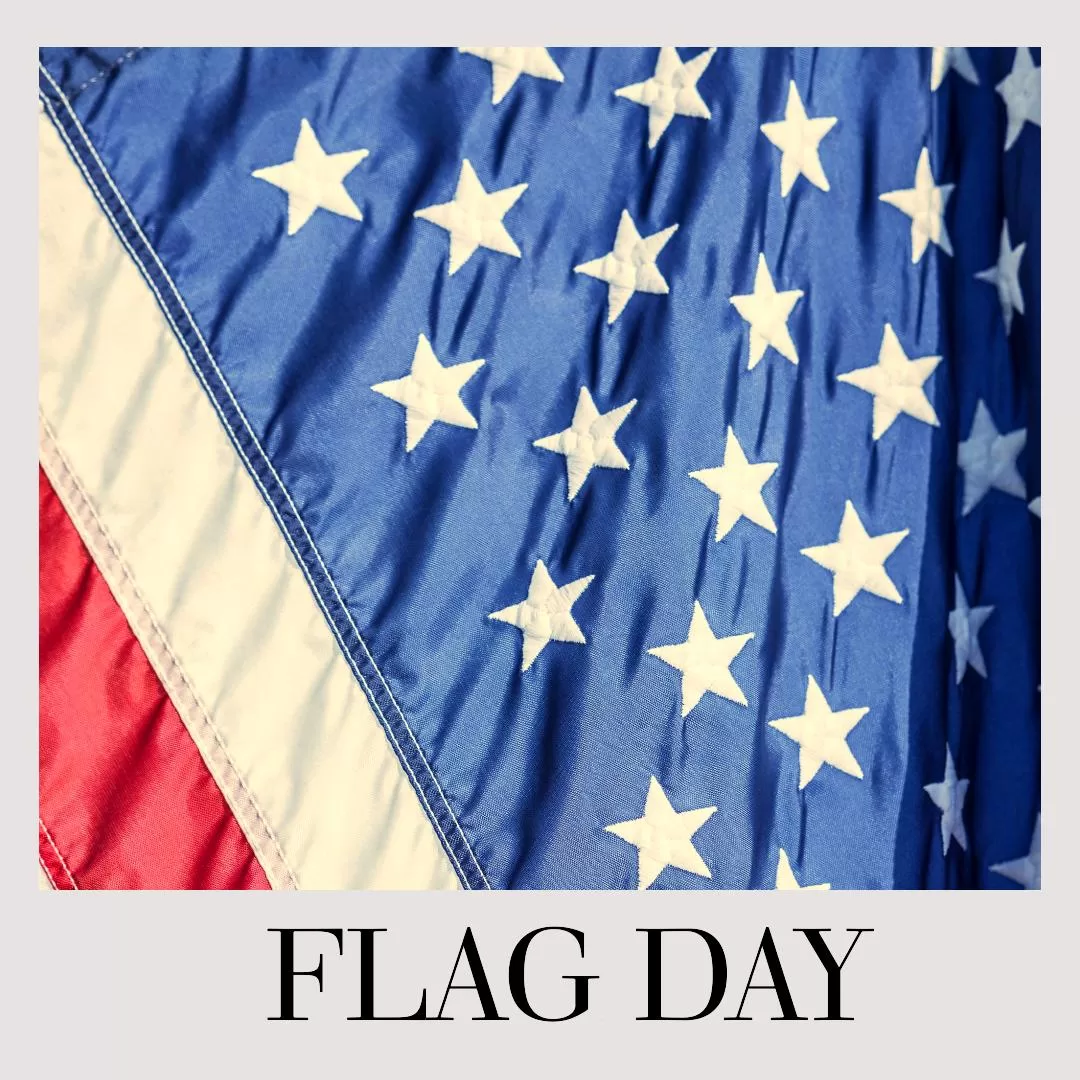
Happy Holidays!

Labor Day, celebrated on the first Monday in September in the United States, honors the American labor movement and the contributions of workers to the development and prosperity of the country. The origins of this national holiday date back to the late 19th century, a period marked by intense labor unrest and the growing power of labor unions.

The Industrial Revolution transformed the American economy from agrarian to industrial, leading to rapid urbanization and the growth of factories. While this shift brought economic opportunities, it also led to harsh working conditions. Workers faced long hours, often 12-16 hours a day, low wages, and unsafe environments. Child labor was rampant, and there were few protections for workers’ rights.
The plight of the working class led to the formation of labor unions, which sought to improve working conditions, secure better wages, and reduce the workday. By the late 19th century, labor strikes and rallies became common as workers demanded their rights. The Origins of Labor Day
The first unofficial Labor Day was celebrated on September 5, 1882, in New York City. It was organized by the Central Labor Union (CLU), a group that represented multiple unions in the city. The event featured a parade through the streets of Manhattan, with thousands of workers marching to demonstrate the strength and solidarity of the labor movement. The parade was followed by a festival with speeches, music, and picnics, embodying the spirit of unity among workers.
The success of the first Labor Day celebration inspired other cities and states to adopt the idea. Oregon became the first state to make Labor Day an official holiday in 1887, and by the end of the decade, several more states had followed suit.
One of the pivotal events that led to the national recognition of Labor Day was the Pullman Strike of 1894. The strike began at the Pullman Company in Chicago, where workers protested wage cuts and high rents in the company-owned town. The strike spread nationwide, disrupting rail traffic and leading to a confrontation between labor and the federal government. The Origins of Labor Day
President Grover Cleveland, facing pressure to resolve the strike, sent federal troops to break it up, resulting in violence and several deaths. In the aftermath, there was widespread public sympathy for the workers, and the federal government sought to appease the labor movement.
To mend relations with American workers, Congress swiftly passed legislation making Labor Day a national holiday. On June 28, 1894, President Cleveland signed the bill into law, designating the first Monday in September as Labor Day.
Labor Day has evolved over the years from a day of labor protests and parades to a more general celebration of the contributions of American workers. It marks the unofficial end of summer, with many people enjoying picnics, barbecues, and other leisure activities.
However, the day also serves as a reminder of the ongoing struggles and achievements of the labor movement. Issues like fair wages, workplace safety, and workers’ rights continue to be relevant, reflecting the enduring importance of the values that Labor Day represents.
Today, Labor Day stands as a tribute to the sacrifices and contributions of American workers, whose efforts have shaped the nation’s economic and social landscape. It is a day to reflect on the progress made in labor rights and the work that still lies ahead in the pursuit of justice and equality in the workplace.
Flag Day, celebrated in the United States on June 14, is a holiday that commemorates the adoption of the Stars and Stripes as the official flag of the United States. The origins of this observance date back to the late 19th century, although the significance of the flag itself stretches to the early days of the nation.

The story begins on June 14, 1777, when the Second Continental Congress passed a resolution establishing an official flag for the new nation. The resolution stated: “Resolved, That the flag of the thirteen United States be thirteen stripes, alternate red and white; that the union be thirteen stars, white in a blue field, representing a new constellation.” This decision gave birth to the American flag as a symbol of unity and independence.
The first recorded observance of Flag Day occurred in 1885 when Bernard J. Cigrand, a Wisconsin schoolteacher, organized a day to celebrate the flag’s birthday. He held this observance at Stony Hill School, where he taught, and continued to advocate for a national day of recognition for the flag.
Cigrand’s efforts were bolstered by other educators and civic leaders who recognized the importance of a day dedicated to the national flag. In 1889, George Balch, a New York City kindergarten teacher, organized a similar observance in his school, which was subsequently adopted by the New York State Board of Education.
The push for national recognition of Flag Day gained momentum in the early 20th century. In 1916, President Woodrow Wilson issued a proclamation establishing June 14 as Flag Day. He emphasized the flag’s role in symbolizing national ideals and unity during a time of increasing international conflict.
However, it wasn’t until August 3, 1949, that President Harry S. Truman signed an Act of Congress designating June 14 of each year as National Flag Day. This act formalized the observance and ensured its place in the national calendar.
Today, Flag Day is celebrated with various activities, including flag-raising ceremonies, parades, and educational programs. While it is not a federal holiday, many states and local governments observe it, and organizations like the National Flag Day Foundation work to promote its significance.
The day serves as an opportunity for Americans to reflect on the flag’s history and the values it represents. It also reinforces the ideals of patriotism and unity that the flag embodies, reminding citizens of the sacrifices made for the country’s freedom and the ongoing responsibility to uphold its principles.
Flag Day is more than just a day to honor a piece of cloth; it is a day to honor the principles of liberty, justice, and unity that the flag represents. From its origins in the 18th century to its establishment as a national observance in the 20th century, Flag Day reflects the enduring importance of the American flag as a symbol of the nation’s identity and ideals.
Memorial Day, a significant American holiday, honors the men and women who have died in military service to the United States. Its origins trace back to the aftermath of the Civil War, a conflict that left a deep and lasting impact on the nation. The Origins and History of Memorial Day in the US

The exact origins of Memorial Day are debated, but several towns and cities across America claim to have been the first to observe the holiday in the late 1860s. One of the earliest known observances was in Charleston, South Carolina, in 1865, where freed slaves and Union soldiers gathered to honor fallen Union soldiers. This event is sometimes cited as the first Memorial Day celebration.
However, the most commonly recognized inception of Memorial Day is linked to General John A. Logan, leader of an organization for Northern Civil War veterans, who called for a nationwide day of remembrance on May 30, 1868. Logan chose the date specifically because it was not the anniversary of any particular battle, thereby making it a neutral day to honor all soldiers who died in the Civil War. On the first official Decoration Day, as it was originally called, General James Garfield gave a speech at Arlington National Cemetery, and 5,000 participants decorated the graves of 20,000 Union and Confederate soldiers buried there.
Initially, Memorial Day was known as Decoration Day due to the tradition of decorating soldiers’ graves with flowers and flags. The focus was predominantly on honoring those who had died in the Civil War. However, as the United States became involved in subsequent conflicts, including World War I and World War II, the holiday evolved to commemorate American military personnel who died in all wars.
By the early 20th century, the term “Memorial Day” began to be more commonly used, and after World War II, it became the more prevalent name for the holiday. In 1967, the name Memorial Day was officially recognized by federal law.
The Uniform Monday Holiday Act, passed by Congress in 1968, established the holiday as the last Monday in May to create a three-day weekend for federal employees. This act, which took effect in 1971, aimed to provide a convenient and standardized way to observe national holidays, including Memorial Day.
Today, Memorial Day is observed with a variety of traditions that honor fallen soldiers. Many Americans visit cemeteries and memorials to pay their respects. Volunteers often place American flags on graves of military personnel. A national moment of remembrance takes place at 3:00 PM local time, providing an opportunity for reflection.
Parades are a common feature of Holiday celebrations, with many towns and cities hosting parades that include military personnel, veterans, and patriotic floats. Additionally, the holiday marks the unofficial start of summer, often celebrated with family gatherings, barbecues, and outdoor activities.
Mother’s Day may have pagan origins, dating back to ancient Greek spring festivals that honored maternal goddesses. In Medieval times, apprentices and servants would also be given Mothering Sunday off to return home to their mothers, and would eat a special fruitcake called a Simnel cake. Happy Mother’s Day: Origins of the Holiday.

Anna Jarvis, a woman from Philadelphia, originated Mother’s Day in the United States in 1907. On May 12, 1907, she held a memorial service for her mother, Ann Jarvis, at her mother’s church in Grafton, West Virginia. Ann Jarvis had organized women’s groups to promote health and friendship, and had also nursed soldiers during the American Civil War. Anna wanted to honor her mother’s work and the sacrifices of motherhood, and by 1912, 45 US states and other countries were observing Mother’s Day. In 1914, President Woodrow Wilson made Mother’s Day a national holiday in the United States, to be celebrated on the second Sunday of May.
Anna Jarvis also promoted wearing a white carnation as a tribute to a deceased mother, and a red or pink carnation to represent a living mother.